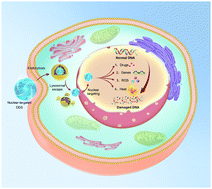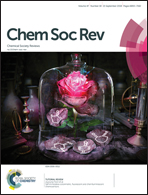Cancer cell nucleus-targeting nanocomposites for advanced tumor therapeutics
Abstract
Tumor therapeutic efficacy is determined, to a great extent, by the delivery efficiency of therapeutic drugs to their final targets. The cell nucleus has been proven to be the main interaction site for most therapeutic agents such as anticancer drugs, genes, free radicals, and heat. Therefore, it is highly expected that cell nucleus-targeting or nuclear membrane-penetrating nanotherapeutics would provide a more effective strategy than ordinary cell membrane-targeting ones for benefiting precise nanomedicine in humans' battles against cancer. This tutorial review presents a summary of the most recent progress achieved in the design, synthesis, and application of cell nucleus-targeting nanotherapeutics. We first discuss a number of design principles involved in cell nucleus-targeting nanotherapeutics, including size control, shape regulation, and surface modification. Next, we demonstrate the diverse applications of cell nucleus-targeting nanotherapeutics ranging from chemotherapy, gene therapy, photodynamic therapy, photothermal therapy to synergistic therapy. Moreover, a number of typical nanotherapeutics designed for enhanced therapeutic efficacy by targeting other subcellular organelles (such as mitochondria, lysosomes, and endoplasmic reticulum) are also briefly discussed. Finally, perspectives and challenges in this research field are proposed, in the hope of accelerating their translation into the clinic.



 Please wait while we load your content...
Please wait while we load your content...